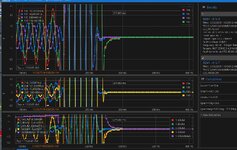How do you handle the mutual coupling?
- Ignore it.
- Carefully model the distribution circuit(s) and mutual(s) in your fault program.
- Model just the distribution neutral in your fault program.
- Measure the line impedances including the mutual coupling with test equipment.
- Use actual fault data to estimate the parameters.
- Avoid using ground distance. (In favor of?)
- Something else. (What?)

